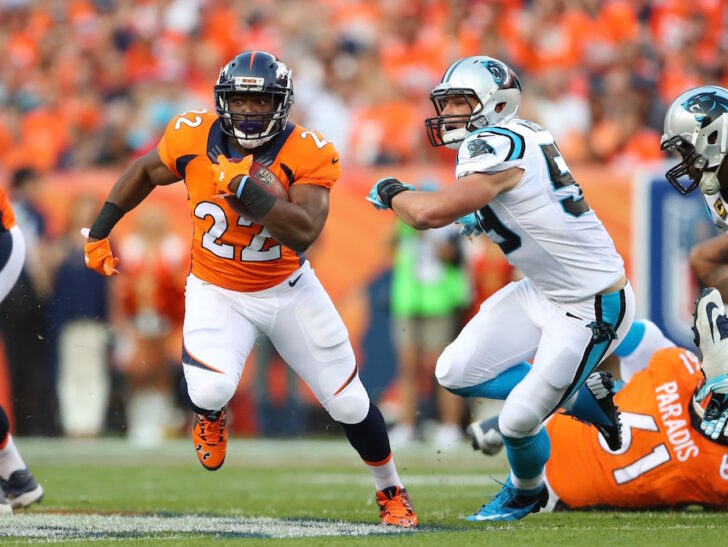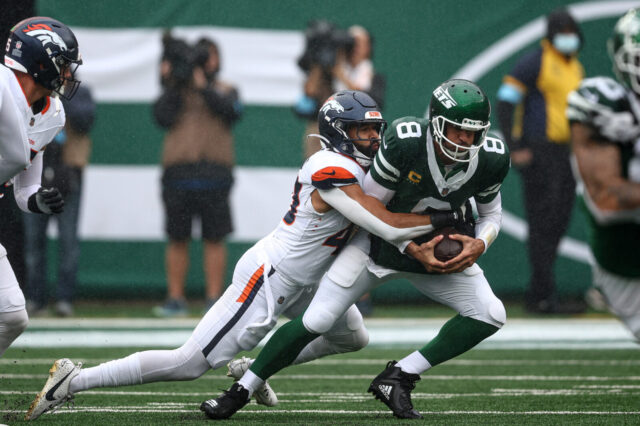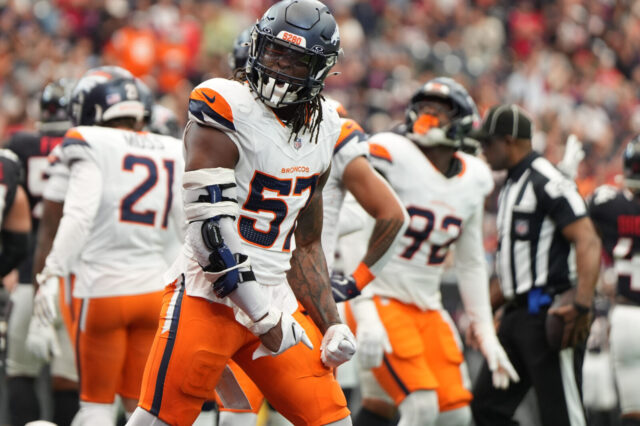It was a road game versus the Oakland Raiders when C.J. Anderson made the biggest statement of the type of talent he has in him. In taking a short check-down pass from Peyton Manning, Anderson showcased his then-untapped running ability, weaving around and through Raiders defenders all the way for a score that signaled the beginning of a rout in a 41-17 Broncos win. Now, entering his fifth season with the team, it feels like we are still waiting for Anderson to be the workhorse running back the Denver offense has been missing since the days of Terrell Davis or Clinton Portis.
With the arrival of Jamaal Charles and the reintroduction of the Mike McCoy offense in Denver, Anderson’s role on the team may be changing. The stocky runner constantly teases Broncos Country with the type of back he can be. Whether it be taking a handoff to the house against the New England Patriots that sealed a win in overtime or by refusing to give in to multiple tackle attempts on a crucial fourth down conversion versus the Indianapolis Colts, Anderson has never been short on potential.
In the past two seasons, Anderson has been expected to shoulder a significant load of the running game, and in both those years the running back was hit with a variety of ailments. There is little doubt that when Anderson is at full health, he is one of the emotional catalysts on the offense as well as possessing all the tools (vison, elusiveness, power) to be a top-10 running back in the league. The problem lies in that he can never seem to make it through a campaign without missing time because of injury. Denver’s move to a running back by committee approach for this season, hedging themselves against another injury, is not a great sign for a runner like Anderson that is at his best getting 15-20 touches in a game.
The addition of McCoy has widely been praised as a move to improve an offense that has largely struggled in recent time. The Chargers offense, under the care of McCoy, was respectable running the ball, even without the luxury of having an elite ball carrier. For every Melvin Gordon that has suited up for the Chargers, McCoy was still able to have a functional running game with the Brandon Olivers and Danny Woodheads of the league as well. This year, Denver has set itself up to not have to depend on Anderson.
Still, its tantalizing to think about what kind of year Anderson could have if he could just stay off of the training table. In 2014, Anderson made the Pro Bowl on the strength of his 849 yards rushing and eight touchdowns in just a half season as the starting tailback. In that season, both running and catching the football, Anderson looked to have positioned himself as the next great Denver running back to come out of obscurity and into greatness.
The 2015 season got off to a slow start for Anderson, but once he got over lingering ankle problems he became the more effective runner between himself and Ronnie Hillman as the season wore on. While Hillman led the team in rushing that year, Anderson was the preferred back down the stretch and into the playoffs. If not for his 234 postseason yards and two touchdowns, which included the go-ahead score in the Super Bowl, the Broncos may not have brought the Lombardi Trophy back to the Mile High City that year.
The former Golden Bear is a fan favorite in the Denver-area and it’s not hard to see why. Affable off the field and fiery on the gridiron, Anderson has become one of the more popular Broncos on the team. However, it can be frustrating that Anderson can’t find a middle ground with his play in the peaks and valleys we have been accustomed to seeing from him the past two seasons.
Anderson is still just 26 years old and should be in the prime of his career. Despite what has happened with the Broncos recently, bringing in multiple running backs to insulate themselves against a potential injury or by fans and others simply forgetting how good he can be, Anderson needs to prove that he is more than just a good back for half of a season and find a way to bring his best for a full, 16-week NFL year.



